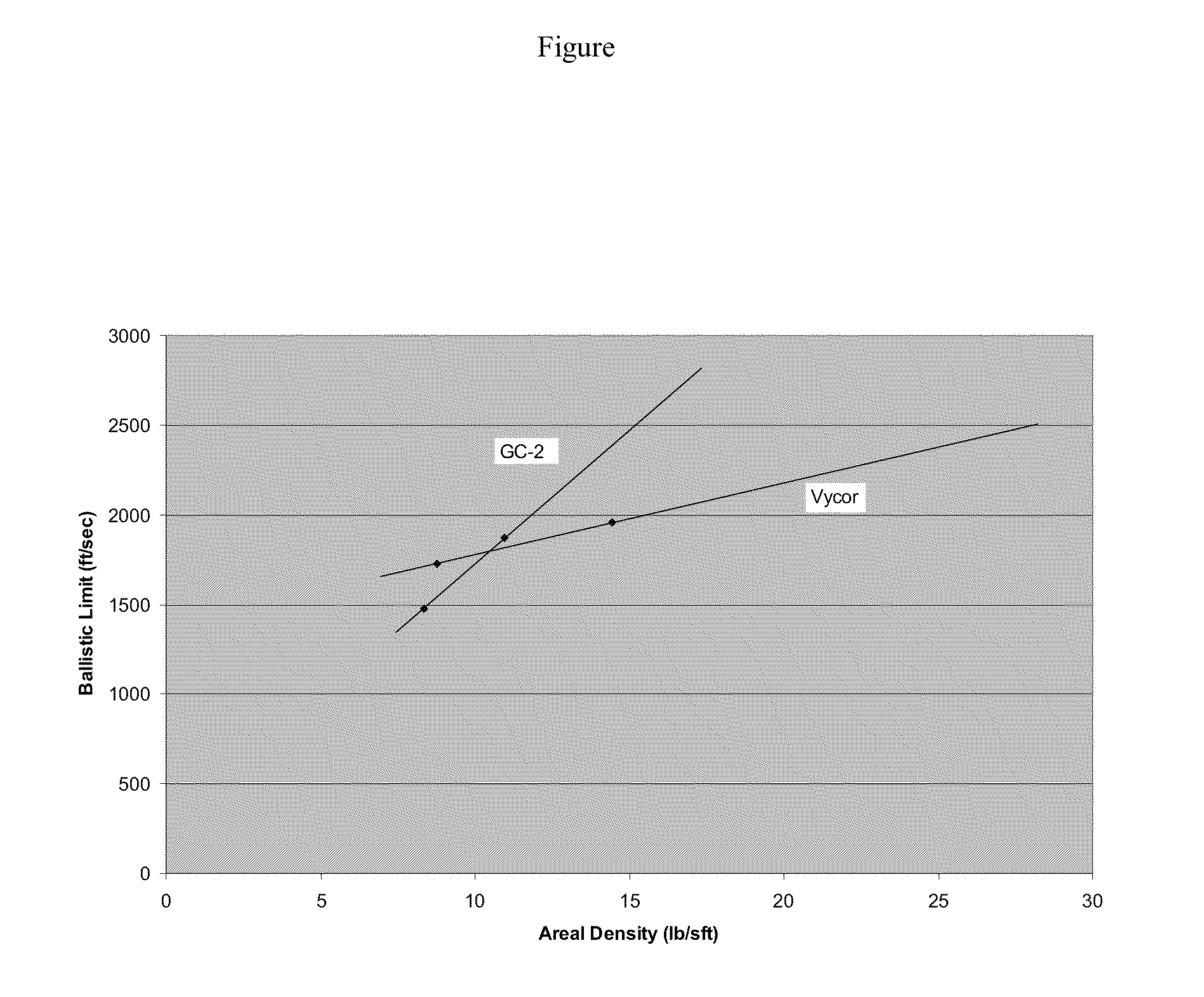Transparent glass-ceramic armor
a technology of glass-ceramic armor and transparent glass, which is applied in the direction of armor, protective equipment, weapons, etc., can solve the problems of reducing transparency, limiting the application of optical properties, and reducing their durability
- Summary
- Abstract
- Description
- Claims
- Application Information
AI Technical Summary
Benefits of technology
Problems solved by technology
Method used
Image
Examples
Embodiment Construction
[0019]As used herein, the phrase “a ballistic limit vs. areal density line slope refers to a plot exemplified by FIG. 1 in which the ballistic limit V50 in units of feet per second and the areal density is units of pounds per square foot, and the phrase is meant to include any similar plots of ballistic limit verses areal density regardless of the unit system that is used. The term V50 signifies the projectile velocity at which there is a 50% probability of target penetration by the projectile. Glass-ceramic materials that are useful according to the invention for transparent armor applications have a slope that is greater than the normalized slope of the reference material (that is, the standard for all comparative measurements) of FIG. 1 which is Vycor® brand glass. The slope of the Vycor glass is assigned a normalized value of 1.0 and all glass-ceramic materials useful according to the invention will have a slope that is greater than 1.0. For example without limitation, relative ...
PUM
| Property | Measurement | Unit |
|---|---|---|
| size | aaaaa | aaaaa |
| crystallite size | aaaaa | aaaaa |
| weight percent | aaaaa | aaaaa |
Abstract
Description
Claims
Application Information
 Login to View More
Login to View More - R&D
- Intellectual Property
- Life Sciences
- Materials
- Tech Scout
- Unparalleled Data Quality
- Higher Quality Content
- 60% Fewer Hallucinations
Browse by: Latest US Patents, China's latest patents, Technical Efficacy Thesaurus, Application Domain, Technology Topic, Popular Technical Reports.
© 2025 PatSnap. All rights reserved.Legal|Privacy policy|Modern Slavery Act Transparency Statement|Sitemap|About US| Contact US: help@patsnap.com


